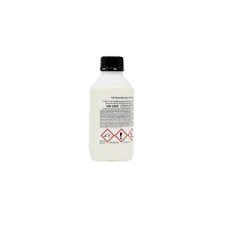Applications and Benefits of Flocculant Chemicals in Water Treatment Processes
The Importance of Flocculant Chemicals in Water Treatment
Flocculant chemicals play a critical role in water treatment processes, particularly in the removal of suspended solids and impurities from water. These substances are widely used in various industries, including municipal water treatment, mining, paper production, and wastewater treatment. Understanding how flocculants function and their applications is essential for improving water quality and ensuring environmental sustainability.
Flocculants are chemicals that promote the clumping or flocculation of particles in a liquid. When added to water, they cause small, suspended solids to aggregate into larger clusters, or flocs. This process significantly enhances the efficiency of sedimentation and filtration, facilitating the removal of contaminants from water. The flocculation process typically involves two main stages coagulation and floc formation. During coagulation, flocculants neutralize the charges on particles, which enables them to come together. In the subsequent floc formation phase, these particles bind to form larger, heavier aggregates that can be easily separated from the water.
One of the most significant advantages of using flocculant chemicals is their ability to improve water clarity. Clear water is essential for a variety of applications, including drinking water supply and industrial processes. For instance, in municipal water treatment, flocculants enhance the effectiveness of filtration systems, resulting in cleaner, safer water for consumption. Additionally, in wastewater management, flocculants help in meeting regulatory standards by ensuring that effluents are free from suspended solids before discharging them into natural bodies of water.
flocculant chemical

Flocculants come in various forms, including natural and synthetic options. Natural flocculants are derived from plant and animal sources, such as alginates, chitosan, and tannins. These are often biodegradable and less toxic, making them an environmentally friendly choice. Synthetic flocculants, on the other hand, are typically polyacrylamides or copolymers, which are more effective in specific applications but may have environmental concerns related to their degradation and potential toxicity.
The choice of flocculant depends on several factors, including the type of contaminants present, the desired water quality, and the operational conditions of the treatment facility. For example, in mining operations, flocculants are used to separate fine particles from water, while in the paper industry, they facilitate the recycling of water used in the manufacturing process. As regulations continue to tighten regarding water quality, the demand for effective and efficient flocculants is expected to rise.
In summary, flocculant chemicals are vital to modern water treatment processes. They enhance the removal of suspended solids, improve water clarity, and contribute to environmental conservation. As industries strive to meet stringent water quality standards, the development and application of innovative flocculant solutions will play an increasingly important role in ensuring clean and safe water for all. Understanding the properties and applications of these chemicals is crucial for engineers, environmentalists, and anyone involved in water management and treatment.
-
Water Treatment with Flocculant Water TreatmentNewsJun.12,2025
-
Polymaleic AnhydrideNewsJun.12,2025
-
Polyaspartic AcidNewsJun.12,2025
-
Enhance Industrial Processes with IsothiazolinonesNewsJun.12,2025
-
Enhance Industrial Processes with PBTCA SolutionsNewsJun.12,2025
-
Dodecyldimethylbenzylammonium Chloride SolutionsNewsJun.12,2025





